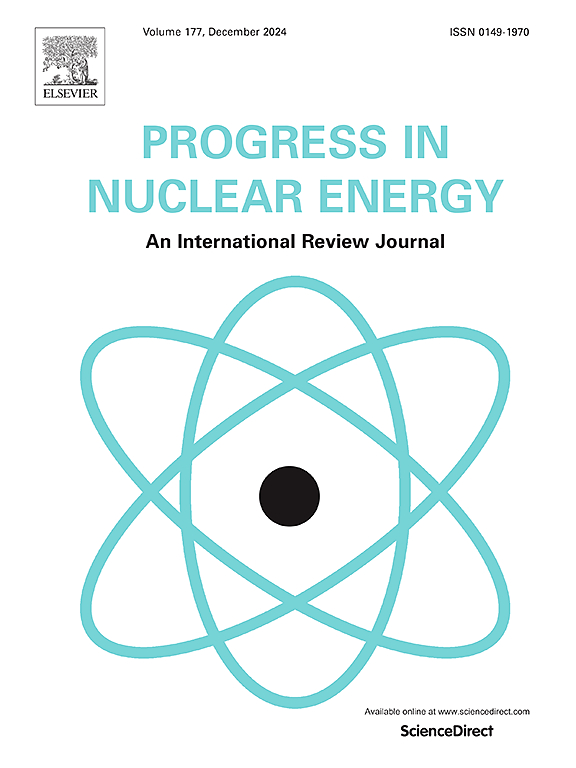Evaluation of load following control strategy for heat pipe-cooled microreactor coupled with closed Brayton cycle system
IF 3.3
3区 工程技术
Q1 NUCLEAR SCIENCE & TECHNOLOGY
引用次数: 0
Abstract
Heat pipe-cooled reactors (HPCRs), with their straightforward and compact design and inherent safety features, are considered a promising option for mobile nuclear power sources. However, the coupling between the HPCR and the energy conversion system complicates load tracking control. In this study, a comprehensive dynamic model of an HPCR coupled with a closed-air Brayton cycle (CABC) is developed. This model integrates a neutron kinetics point reactor model, a thermal resistance network model for the heat pipe, and a CABC model representing the power conversion system. To achieve effective load tracking, a control scheme for the Brayton cycle power is proposed, combining turbine bypass control with inventory control. The system's response to load variations, from 100 % full power (FP) to 50 % FP at a rate of 5 % FP/min, is analyzed, considering reactor power self-regulation. The results indicate that the reactor power exhibits an overshoot of −4.36 % and stabilizes after 2100s, while the fuel average temperature fluctuates within ±4.6 °C and stabilizes at 2240s. Building on the dynamic performance of the HPCR-CABC system, a reactor power control scheme is developed by adjusting control drums to introduce external reactivity. This scheme successfully controls reactor power at a steady state within 720s, without fluctuation. However, the fuel average temperature fluctuates by more than 10 °C, stabilizing after 9450s. To improve control effectiveness, a temperature correction channel is incorporated into the reactor power control system. As a result, the fuel average temperature fluctuates within ±0.3 °C and stabilizes at the design value of 699.4 °C within 860s. Compared to previous control schemes, the improved cascade reactor power control scheme results in a shorter stabilization time for the fuel average temperature. To assess the adaptability of the proposed HPCR-CABC coordination control strategy, simulations are conducted for load reductions from 100 % FP to 80 %, 60 %, and 40 % FP at a variation rate of 20 % FP/min. The results demonstrate that the proposed HPCR-CABC coordination control strategy exhibits strong load-following capability.
求助全文
约1分钟内获得全文
求助全文
来源期刊

Progress in Nuclear Energy
工程技术-核科学技术
CiteScore
5.30
自引率
14.80%
发文量
331
审稿时长
3.5 months
期刊介绍:
Progress in Nuclear Energy is an international review journal covering all aspects of nuclear science and engineering. In keeping with the maturity of nuclear power, articles on safety, siting and environmental problems are encouraged, as are those associated with economics and fuel management. However, basic physics and engineering will remain an important aspect of the editorial policy. Articles published are either of a review nature or present new material in more depth. They are aimed at researchers and technically-oriented managers working in the nuclear energy field.
Please note the following:
1) PNE seeks high quality research papers which are medium to long in length. Short research papers should be submitted to the journal Annals in Nuclear Energy.
2) PNE reserves the right to reject papers which are based solely on routine application of computer codes used to produce reactor designs or explain existing reactor phenomena. Such papers, although worthy, are best left as laboratory reports whereas Progress in Nuclear Energy seeks papers of originality, which are archival in nature, in the fields of mathematical and experimental nuclear technology, including fission, fusion (blanket physics, radiation damage), safety, materials aspects, economics, etc.
3) Review papers, which may occasionally be invited, are particularly sought by the journal in these fields.
 求助内容:
求助内容: 应助结果提醒方式:
应助结果提醒方式:


